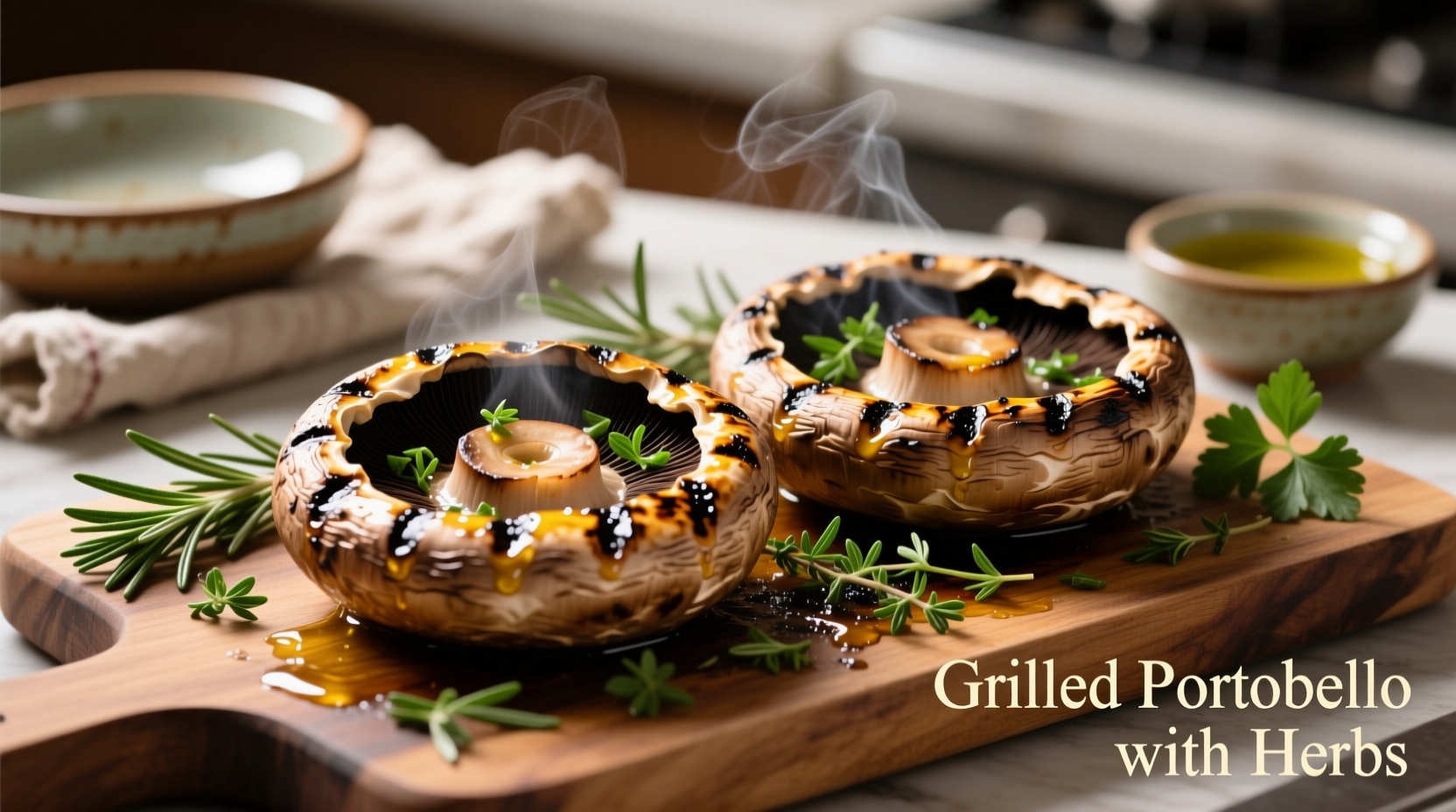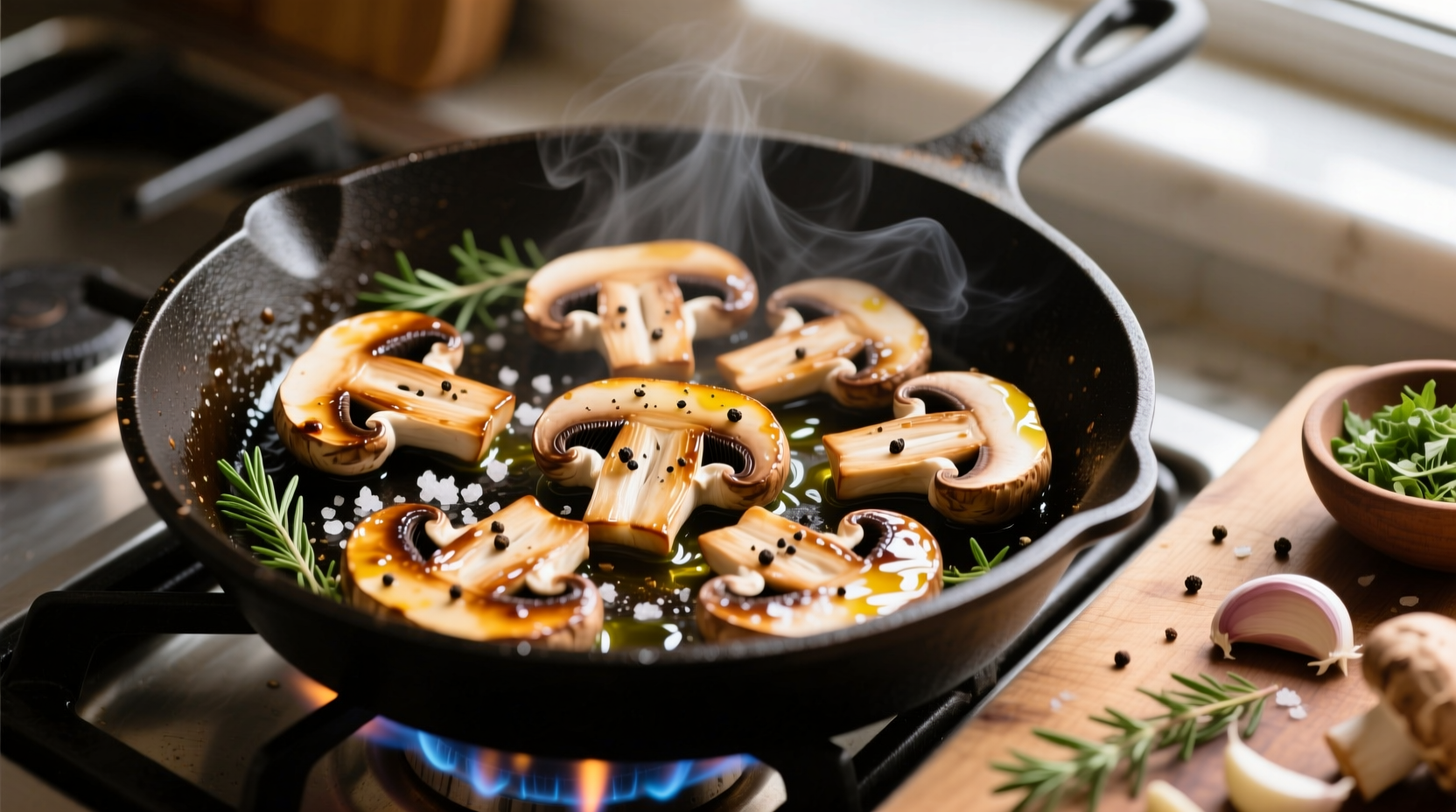Discover exactly how to transform portobello mushrooms into restaurant-quality dishes with these professional techniques. Whether you're preparing a quick weeknight meal or an impressive vegetarian centerpiece, this guide reveals the precise steps, timing, and flavor combinations that make portobello mushrooms truly shine.
Mastering Portobello Mushroom Preparation
Portobello mushrooms offer a meaty texture and rich umami flavor that makes them perfect for grilling, roasting, or sautéing. Unlike delicate mushrooms, portobellos hold their shape well during cooking, making them ideal for standalone dishes or as a meat substitute. The key to perfect portobello mushrooms lies in proper preparation and understanding how heat affects their unique cellular structure.
Essential Preparation Steps Before Cooking
Before you start cooking, proper preparation ensures your portobello mushrooms reach their full potential:
- Gentle cleaning - Wipe with a damp paper towel rather than rinsing under water, which mushrooms readily absorb
- Stem removal - Twist out stems (save for stocks or dicing into other dishes)
- Gill scraping - Optional but recommended for sauces; use a spoon to scrape out dark gills
- Drying - Pat thoroughly with paper towels to ensure proper searing
According to culinary research from the University of California Agriculture and Natural Resources, proper moisture management is critical when cooking mushrooms. Their studies show that excess moisture creates steam during cooking, preventing the Maillard reaction that develops rich flavors.
Portobello Cooking Methods Compared
| Cooking Method | Temperature | Cooking Time | Best For |
|---|---|---|---|
| Grilling | Medium-high (375-400°F) | 4-6 minutes per side | Steak replacements, burgers, outdoor cooking |
| Roasting | 400-425°F | 15-20 minutes | Stuffed mushrooms, meal prep, hands-off cooking |
| Sautéing | Medium-high | 3-5 minutes per side | Quick meals, pasta toppings, stir-fries |
| Broiling | High | 5-7 minutes | When you need char without flipping |
Step-by-Step Grilling Method (Most Popular Technique)
Grilling brings out the natural umami in portobello mushrooms while creating attractive char marks:
- Preheat grill to medium-high heat (375-400°F)
- Prepare mushrooms by cleaning, removing stems, and wiping dry
- Create a simple marinade: 2 tbsp olive oil, 1 tbsp balsamic vinegar, 1 minced garlic clove, salt, and pepper
- Marinate mushrooms for 15-30 minutes (no longer, or they'll become soggy)
- Place mushrooms cap-side down on grill grates
- Cook for 4-6 minutes until liquid releases and evaporates
- Flip and cook another 4-6 minutes until tender but not mushy
- Optional: During last 2 minutes, add cheese (like goat cheese or provolone) to melt

Professional Flavor Enhancement Techniques
Take your portobello mushrooms from good to exceptional with these chef-approved methods:
- Dry brine with salt - Sprinkle mushrooms with salt 20 minutes before cooking to draw out excess moisture
- Acid balance - Finish with a splash of lemon juice or balsamic reduction to cut through earthiness
- Layered seasoning - Season before and after cooking for maximum flavor penetration
- Umami boosters - Add a teaspoon of soy sauce or Worcestershire to marinades
Food science research from the Culinary Institute of America confirms that mushrooms contain natural glutamates that intensify when properly cooked. Their studies demonstrate that high-heat cooking methods maximize these umami compounds, creating deeper flavor profiles than low-temperature approaches.
Avoid These Common Portobello Cooking Mistakes
Even experienced cooks make these errors when preparing portobello mushrooms:
- Overcrowding the pan - Causes steaming instead of searing
- Moving mushrooms too soon - Prevents proper caramelization
- Adding salt too early - Draw out moisture prematurely (except for dry brining)
- Underseasoning - Their robust flavor requires generous seasoning
- Overcooking - Leads to a rubbery texture rather than meaty tenderness
Delicious Portobello Mushroom Serving Suggestions
Portobello mushrooms shine in numerous applications beyond simple side dishes:
- As burger replacements - Serve on toasted brioche with melted cheese and caramelized onions
- Stuffed with grains - Fill caps with quinoa, feta, and sun-dried tomatoes
- In pasta dishes - Slice and sauté with garlic for a hearty mushroom pasta
- As pizza bases - Use large caps as gluten-free pizza crusts
- In breakfast dishes - Top with a fried egg for a protein-rich morning meal
Storage and Reheating Guidelines
Proper storage maintains texture and flavor for future meals:
- Store raw mushrooms in paper bags (not plastic) in the refrigerator
- Cooked mushrooms keep for 3-4 days in airtight containers
- Reheat in oven or skillet rather than microwave to preserve texture
- Freeze cooked mushrooms for up to 3 months (texture changes slightly)
The USDA Food Safety and Inspection Service recommends cooking mushrooms to an internal temperature of 165°F for food safety, though many chefs prefer 150-155°F to maintain optimal texture. Their guidelines emphasize proper handling to prevent cross-contamination with other foods.
Frequently Asked Questions
Here are answers to common questions about cooking portobello mushrooms:
Can you eat portobello mushroom gills?
Yes, portobello mushroom gills are edible, but they can discolor dishes with their dark pigment. For cleaner presentation in light-colored sauces or stuffings, scrape them out with a spoon before cooking. The gills don't significantly affect flavor but can make dishes appear muddy.
Why are my grilled portobello mushrooms soggy?
Soggy portobello mushrooms typically result from excess moisture. Mushrooms contain 90% water, so proper drying before cooking is essential. Try dry-brining with salt 20 minutes before cooking to draw out moisture, then pat thoroughly dry. Also ensure your grill or pan is sufficiently hot before adding mushrooms to create immediate sear rather than steaming.
How do you prevent portobello mushrooms from shrinking?
To minimize shrinkage, avoid marinating mushrooms for extended periods (15-30 minutes maximum), as acidic ingredients draw out moisture. Cook at proper high heat to quickly sear the exterior, creating a barrier that retains moisture. Don't press down on mushrooms while cooking, as this squeezes out valuable juices that contribute to their meaty texture.
What's the best oil for cooking portobello mushrooms?
High smoke point oils work best for searing portobello mushrooms. Avocado oil (smoke point 520°F) or refined olive oil (465°F) are excellent choices that won't burn at the high temperatures needed for proper caramelization. Avoid extra virgin olive oil for high-heat cooking as its lower smoke point (325-375°F) can create bitter flavors when overheated.
Can you cook portobello mushrooms without oil?
Yes, you can cook portobello mushrooms without oil using methods like broiling or dry roasting. Mushrooms naturally contain water that creates steam during initial cooking. However, oil helps with browning and flavor development. For oil-free cooking, ensure mushrooms are completely dry before placing in a preheated pan or oven, and avoid moving them until they've developed a sear.











 浙公网安备
33010002000092号
浙公网安备
33010002000092号 浙B2-20120091-4
浙B2-20120091-4